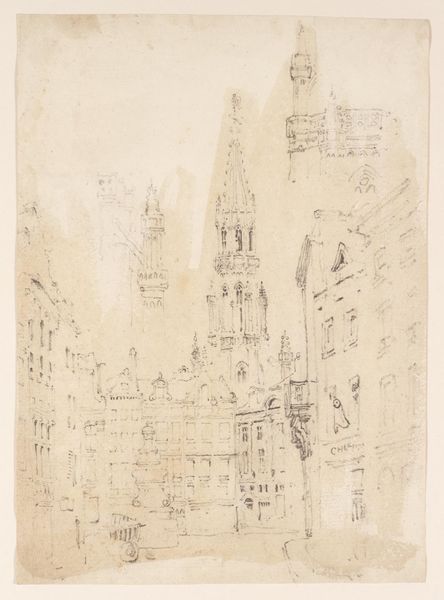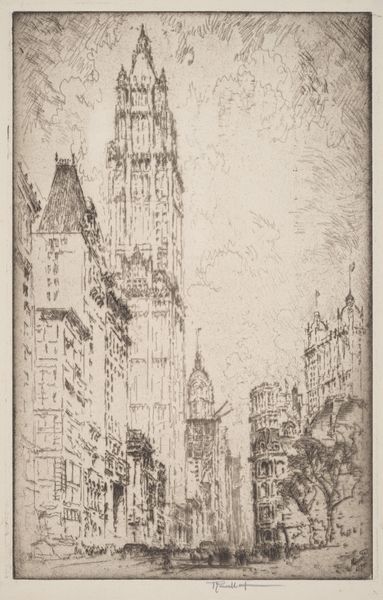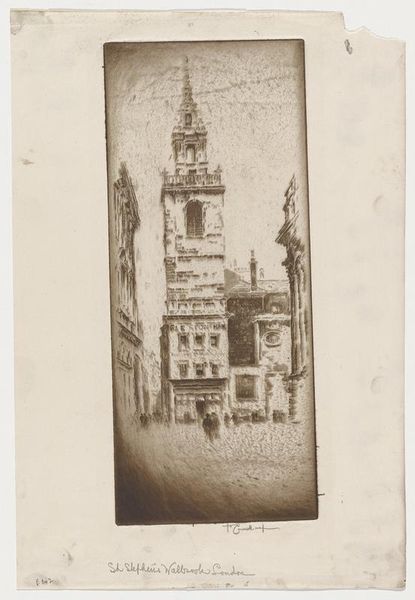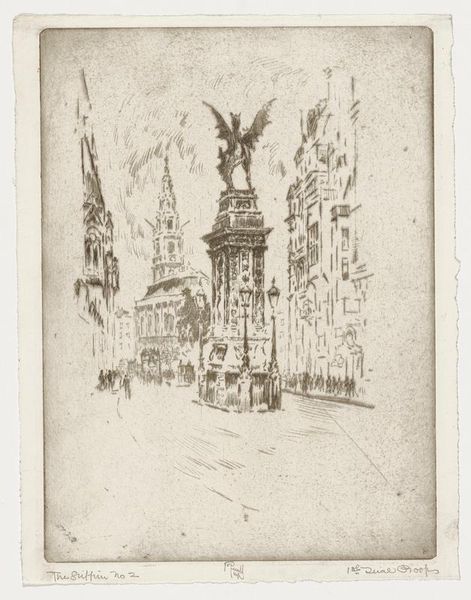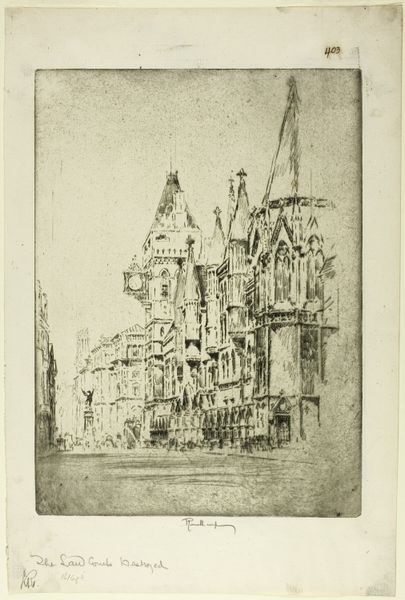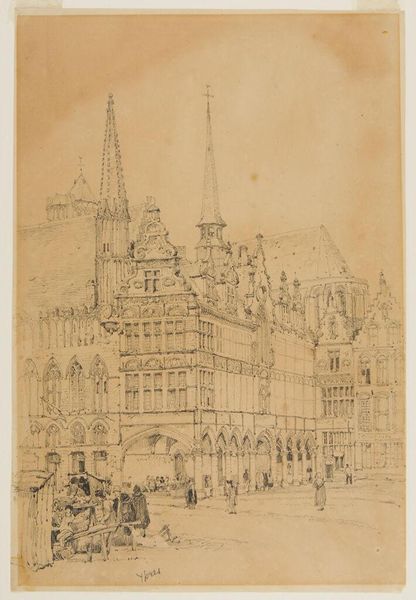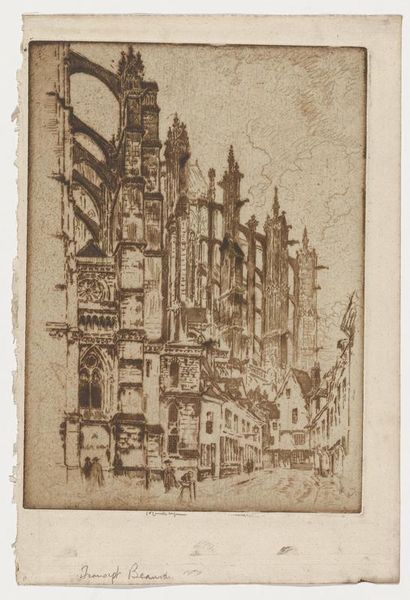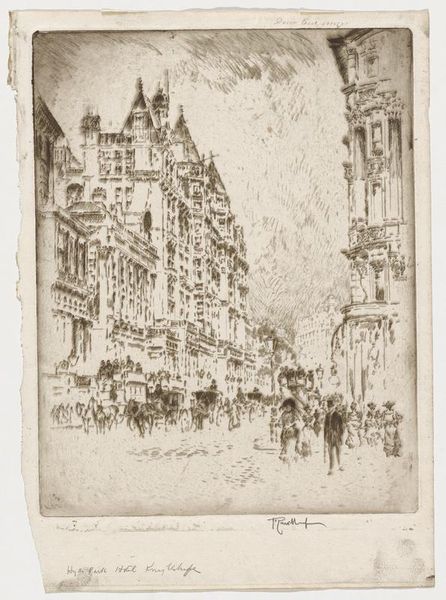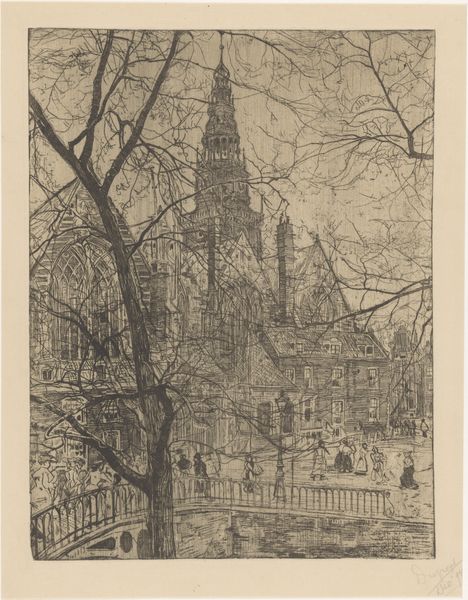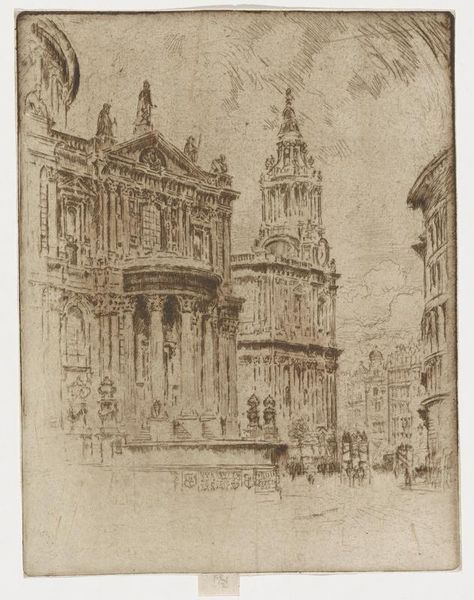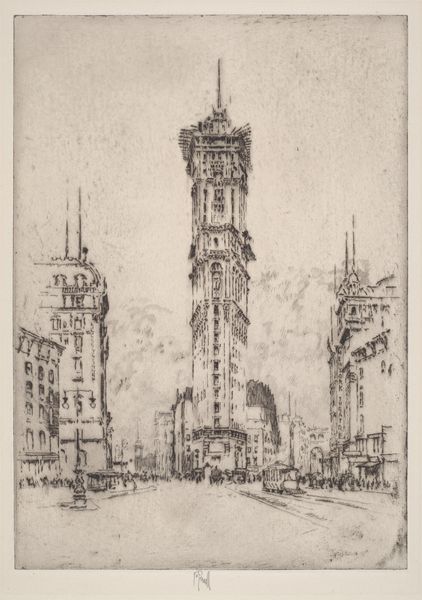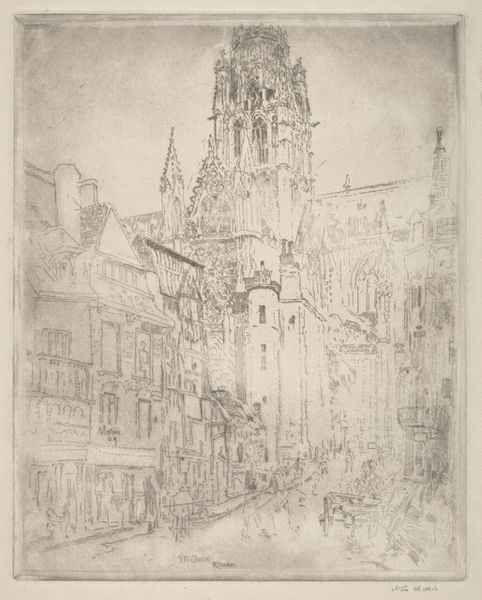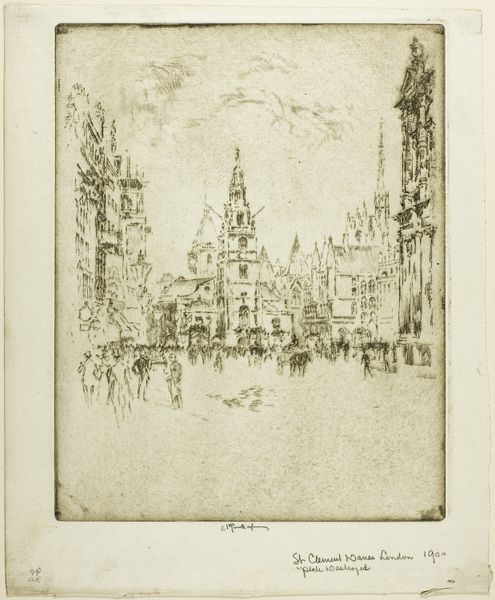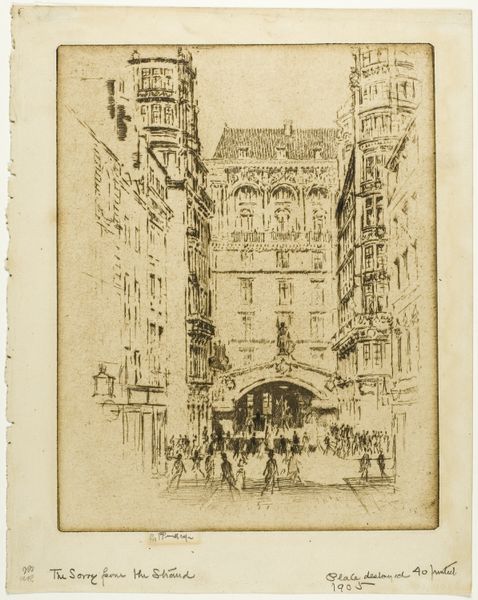
print, etching
#
aged paper
#
toned paper
#
light pencil work
# print
#
etching
#
pencil sketch
#
etching
#
ink drawing experimentation
#
united-states
#
watercolour bleed
#
watercolour illustration
#
sketchbook art
#
watercolor
Dimensions: 11 7/8 x 7 3/8 in. (30.16 x 18.73 cm) (plate)14 7/8 x 11 3/4 in. (37.78 x 29.85 cm) (sheet)
Copyright: No Copyright - United States
Editor: Here we have Joseph Pennell’s etching of The Woolworth Building from 1915. I’m struck by the almost ghostly quality of the lines. It feels incredibly delicate. How do you interpret this work, focusing on its materiality and social context? Curator: I’m drawn to the labor embedded in this piece. Etchings require intense, skilled handwork. Think of the artist, meticulously crafting each line to depict this symbol of burgeoning capitalism, the Woolworth Building. How does the choice of etching, a traditionally "lower" art form in some circles, affect our reading of this powerful skyscraper? Editor: That’s a great point. I hadn’t considered the etching medium itself as a comment on the subject. So, is the artist possibly suggesting a tension between the skyscraper's ambition and the hands that built it? Curator: Precisely. Consider the social context: The Woolworth Building represented wealth and corporate power, yet its construction relied on countless laborers, many working under harsh conditions. The etching, as a reproducible print, also speaks to mass production and consumption. What materials do we overlook when appreciating such works, thinking only about the "artistic genius"? Editor: We often don't think of the copper plate, the acid used to etch, the paper itself, or the labor of the printer, really. It all gets obscured by the final image. Curator: Exactly. And by foregrounding the labor and materiality of the printmaking process, Pennell offers a subtle critique of the very systems the Woolworth Building represents. The beauty is in the process, not just the product. Editor: This makes me see the image completely differently. I was so focused on the image itself, I missed all the layered context embedded within the artistic practice! Curator: That’s the power of a materialist approach – it invites us to see the artwork as a product of complex social and economic forces, challenging the idea of art existing in a vacuum.
Comments
No comments
Be the first to comment and join the conversation on the ultimate creative platform.
